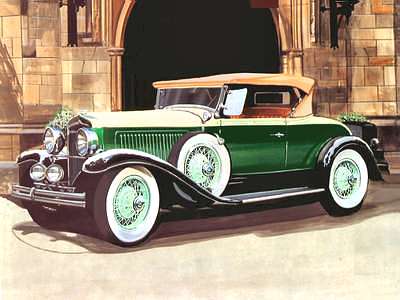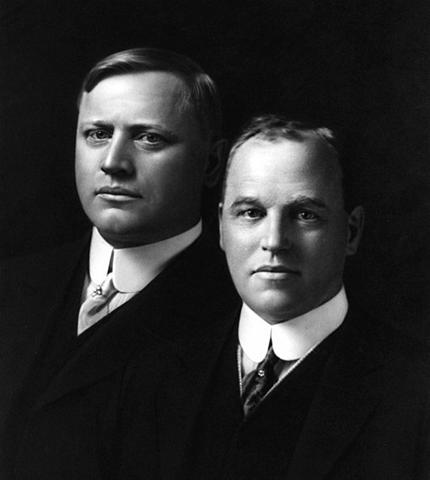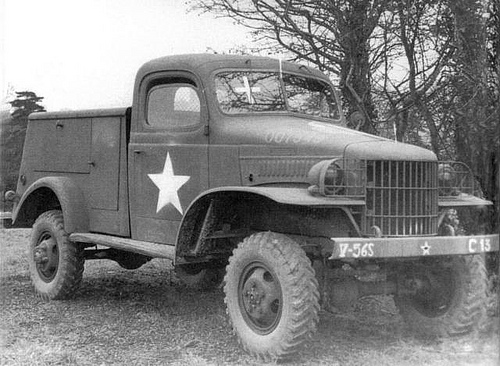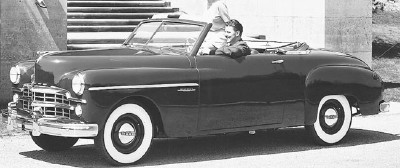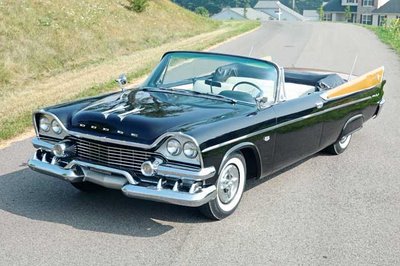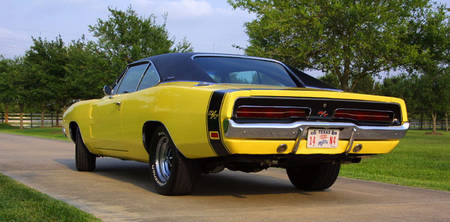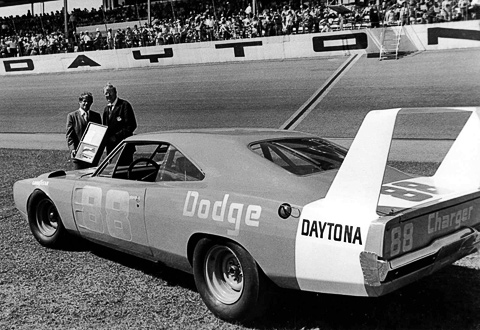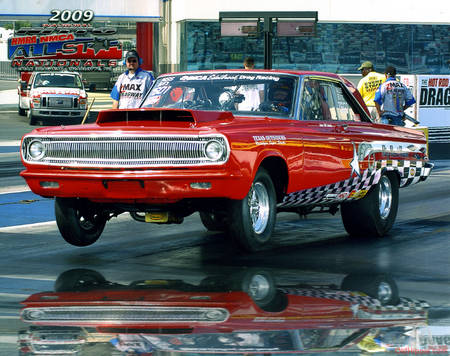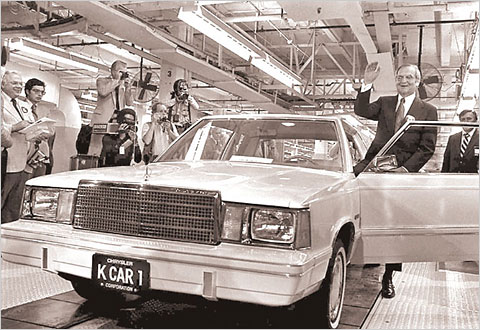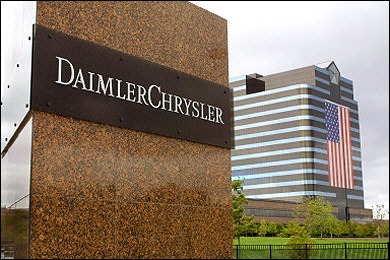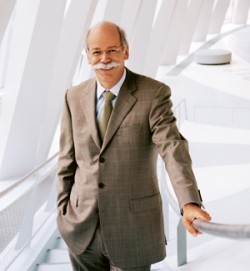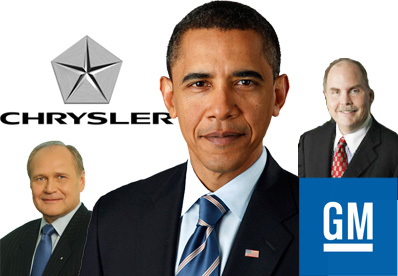Dodge
This Wiki is Under Construction, and can use your help!
Please take a moment to add any information you might have on this topic. It is through this type of Member collaboration that the MoparWiki will grow into being the Ultimate Mopar Infobase. The links contained in the Understanding Wikis box in the sidebar can help you get started.
Contents
- 1 Introduction
- 2 Dodge Brothers
- 3 Chrysler Buys Dodge Brothers
- 4 WWII
- 5 Postwar Styling
- 6 Red Ram Engines
- 7 Forward Look Styling
- 8 The Sixties
- 9 The Seventies and Eighties
- 10 Merger of Equals
- 11 After Dr. Z
- 12 The Obama Gift -- the Beginning of the End
- 13 Wiki Topic References:
- 14 Magazine References:
- 15 External Links
Introduction
Despite all of the ups and downs of the Chrysler Corporation -- Dodge has always been able to show an excellent mixture of both dependability and performance with both its cars and trucks. This was initially promoted by General "Black Jack" Pershing insisting on only Dodge Touring cars in his pursuits of Poncho Villa on the Mexican border.
Dodge was the first with an all metal sedan, it set the standard for durability with its WWII Power Wagons, set the standard for racing with its Max Wedge and Hemi engines, set the standard for Muscle cars with the Charger, set the standard for aerodynamics with the Daytona, set the standard for performance with the Viper, and set the standard for "Cross Over" vehicles with the Magnum. While its future with an Un-Holy Trinity of Fiat, the US Government, and the Unions running it being uncertain -- its past as a Make that merged Durability and performance cannot be denied.
Dodge Brothers
John and Horace Dodge were inseparable as children and adults. They were in fact so close, they they both died as young men in 1920 -- it said the Horace out of grief from the loss of John.
Originally they built bicycles, but in 1900 they formed Dodge Brothers to supply engine and chassis components for Detroit's automakers; with a large contract to produce transmissions for Oldsmobile. John was the Sales/Manager brother, while Horace was the tinkerer/engineer brother.
In 1903, they signed a contract to supply components exclusively to Ford, in exchange for a large share of the company. This arrangement lasted for 10 years -- until 1913 they and Ford had a major disagreement on how Ford's profits were distributed -- causing them to stop supplying Ford and to declare that they would start building cars themselves.
Before the first Dodge Brothers car was produced, they had sign up over 20,000 dealers because of their reputation for quality. It should be noted that while they had a reputation for quality, were among the richest men in Detroit, and very generous in their charitable foundations -- their crude and aggressive behavior kept them from being accepted by the by Detroit elite.
In late 1914, the first Dodge Brothers car rolled off the assembly line and was an immediate hit with the public. For about the same price as a Ford Model T -- a Dodge Brothers had an electric starter, leather interior, a windshield, near double the horsepower, and a far superior three speed transmission. They went from no where to fourth in US car sales.
In January 1920, John died of pneumonia, a complication from the Spanish Flu; and Horace died in December of the same year, also of pneumonia as a complication of the Flu -- but was already dying of Cirrhosis of the liver, rumored to be caused from excess drinking after the loss of his brother. The ownership of Dodge Brothers fell into the hands of their widows, and they chose a family friend, Frederick Haynes to temporarily run the company. He signed a contract with Graham, to power and sell their line of trucks. By 1928, the majority of the Dodge Brothers stock was owned by Manhattan financiers Dillon-Reid -- who decided to shop the sale of Dodge Brothers.
Chrysler Buys Dodge Brothers
On July 31, 1928, Walter P. Chrysler bought Dodge Brothers to fold into his tier of makes that included Chrysler, DeSoto, and newly created price leader Plymouth. By the time of the purchase, the new line had rolled out, which included Dodge Brother's first "Six" cylinder engine. Chrysler carried the Dodge Brother's name until 1929, when it was shorten to just Dodge.
In 1930, and at about the worse possible time, Chrysler gave the Dodge DC model a straight eight, which displaced 220.7 cubic inches and was rated at 75hp. Chrysler and Desoto also had models with a "Straight Eight" engine. While displacement and power increased, because of the Depression, these models sold poorly, and the "Straight Eight" was discontinued for Dodge in 1934. The sole engine was now the 217 CI "Straight Six", rated at 87hp.
In 1935, the 3,000,000th Dodge rolled off the assembly line. In 1939, Dodge was restyled as a Fastback with a V Windshield, which many claimed looked more like a 39 Ford -- than a 39 Ford. During this time, after recovering from the "Straight Eight" error in judgment, Dodge placed between 4th and 5th in US Sales.
WWII
As the case for all US Automakers, all civilian sales were pulled following Pearl Harbor and the US' entry into WWII. Dodge would produce the majority (about 500,000) of the Military trucks -- led by the G-502 3/4 Ton, which would evolve into the Power Wagons. Production of the Power Wagons lasted until 1968.
Postwar Styling
Red Ram Engines
Forward Look Styling
The Sixties
Post Exner Styling
Racing
NASCAR
Drag Racing
The Seventies and Eighties
Merger of Equals
After Dr. Z
The Obama Gift -- the Beginning of the End
Wiki Topic References:
- Hemmings Classic Car June 2007
